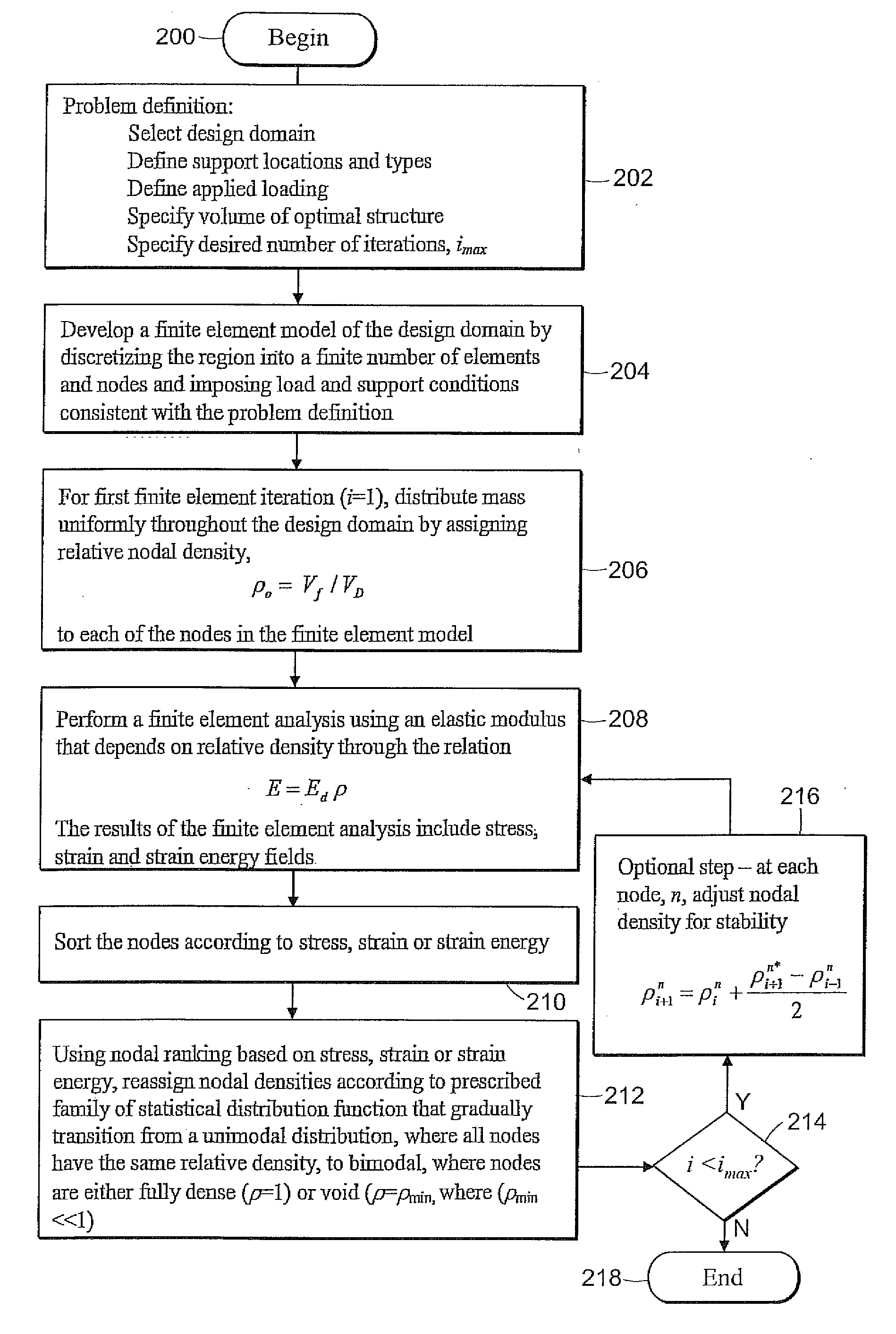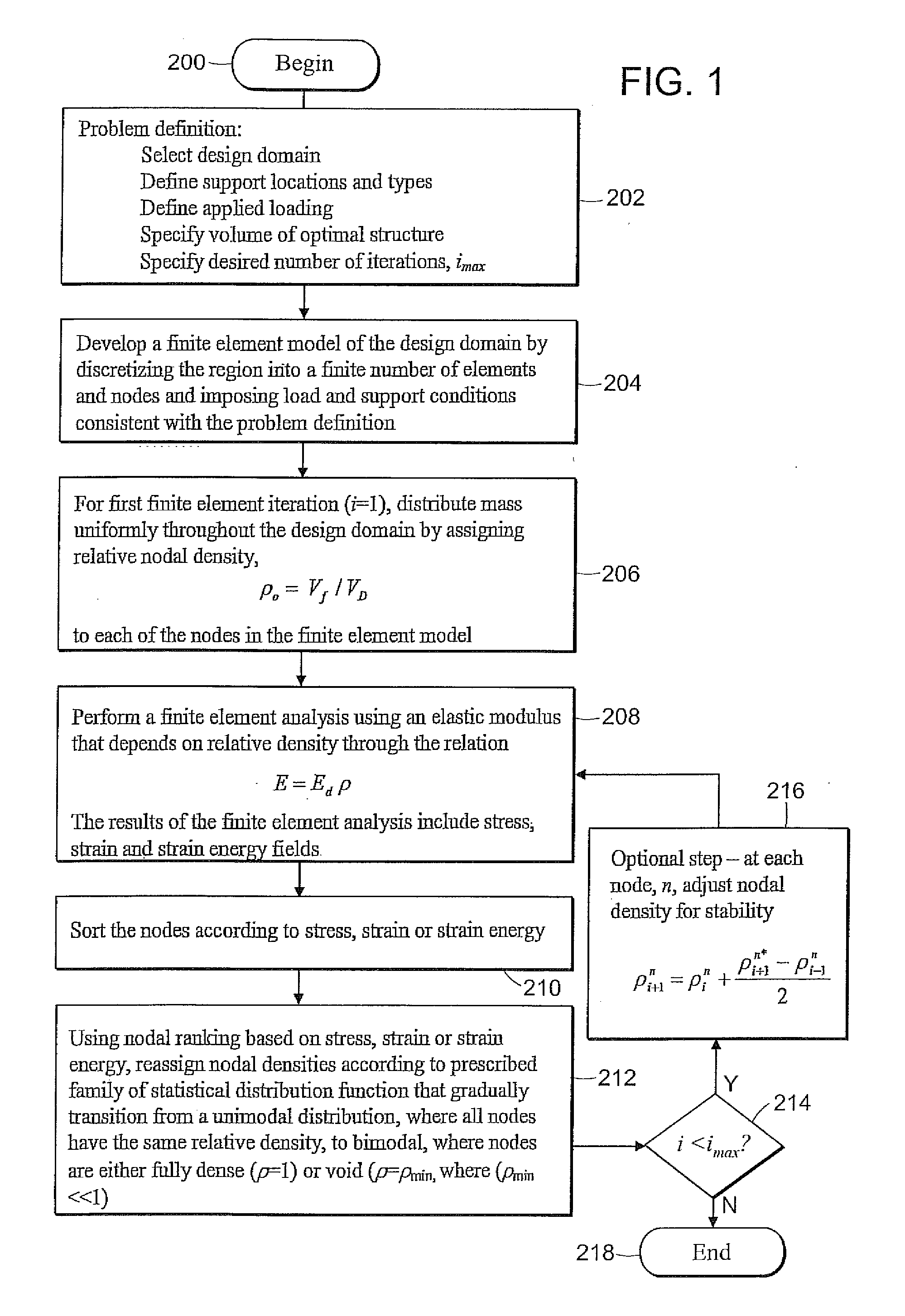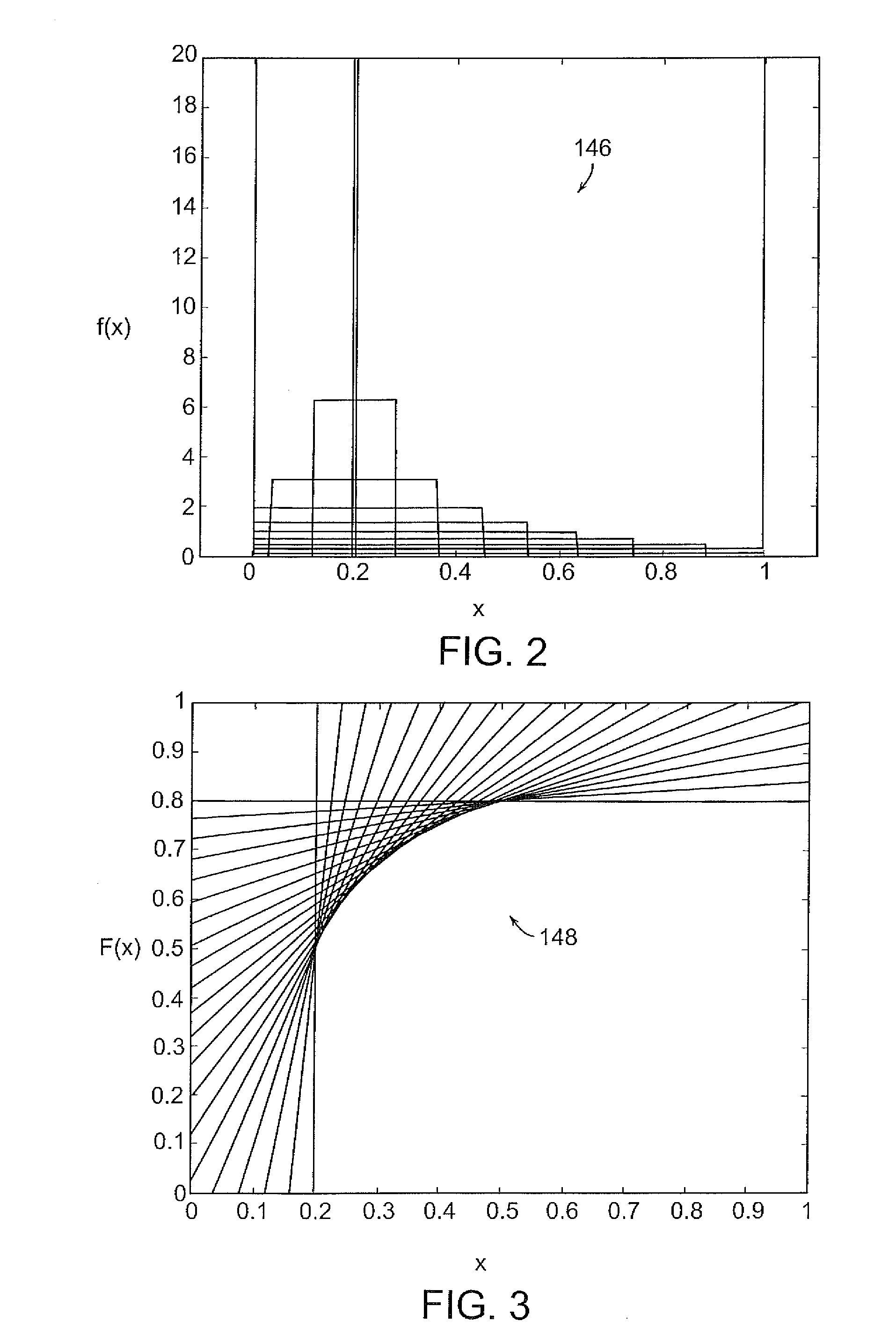Systems and methods for finite element based topology optimization
a finite element and optimization technology, applied in multi-objective optimization, instruments, cad techniques, etc., can solve the problems of numerical procedures becoming necessary, failure to provide optimal topology, and inability to determine analytically optimal topology
- Summary
- Abstract
- Description
- Claims
- Application Information
AI Technical Summary
Benefits of technology
Problems solved by technology
Method used
Image
Examples
Embodiment Construction
iment of the invention;
[0018]FIG. 8 shows an illustrative diagrammatic view of the analytically optimal topology of the domain shown in FIG. 6 in accordance with an embodiment of the invention;
[0019]FIG. 9 shows an illustrative diagrammatic view of a minimum weight topology of a domain similar to that shown in FIG. 6 but for a dual strength material in accordance with an embodiment of the invention;
[0020]FIG. 10 shows an illustrative diagrammatic view of the analytically optimal topology of a domain similar to that shown in FIG. 6 but for a dual strength material in accordance with an embodiment of the invention;
[0021]FIG. 11 shows an illustrative diagrammatic view of a test case expected topology for a methodology of the invention for use on a three-dimensional structure;
[0022]FIG. 12 shows an illustrative diagrammatic view of a minimum weight topology of the test case shown in FIG. 11 in accordance with an embodiment of the invention.
[0023]The drawings are for illustrative purpose...
PUM
 Login to View More
Login to View More Abstract
Description
Claims
Application Information
 Login to View More
Login to View More - R&D
- Intellectual Property
- Life Sciences
- Materials
- Tech Scout
- Unparalleled Data Quality
- Higher Quality Content
- 60% Fewer Hallucinations
Browse by: Latest US Patents, China's latest patents, Technical Efficacy Thesaurus, Application Domain, Technology Topic, Popular Technical Reports.
© 2025 PatSnap. All rights reserved.Legal|Privacy policy|Modern Slavery Act Transparency Statement|Sitemap|About US| Contact US: help@patsnap.com



